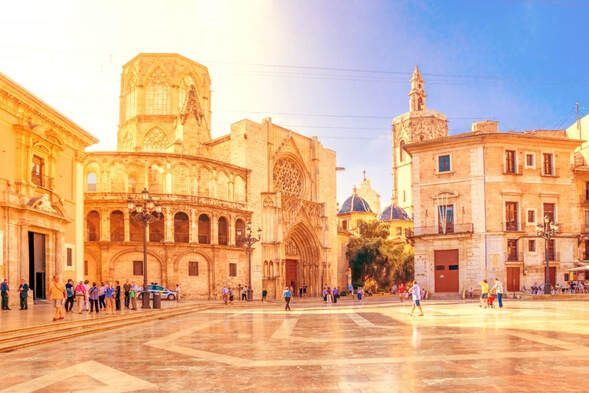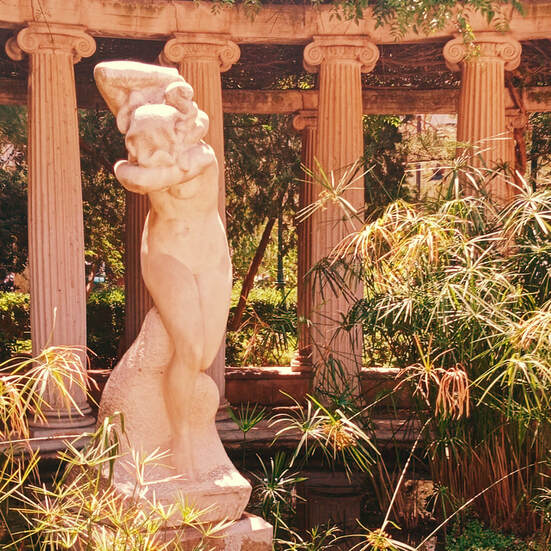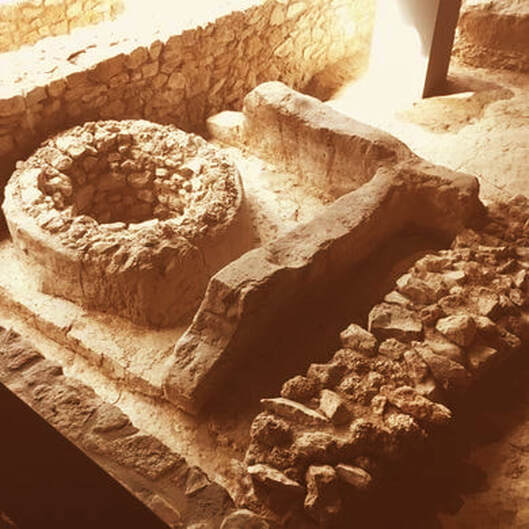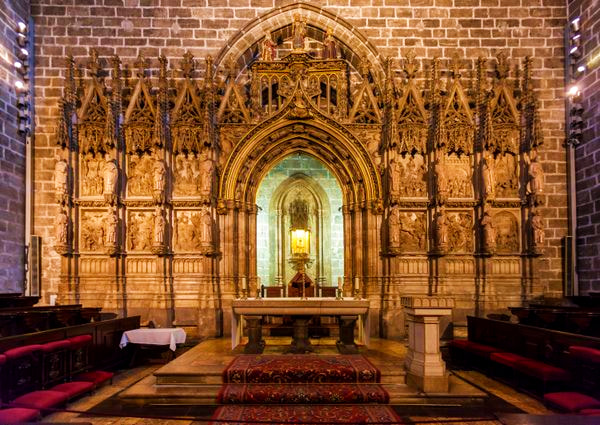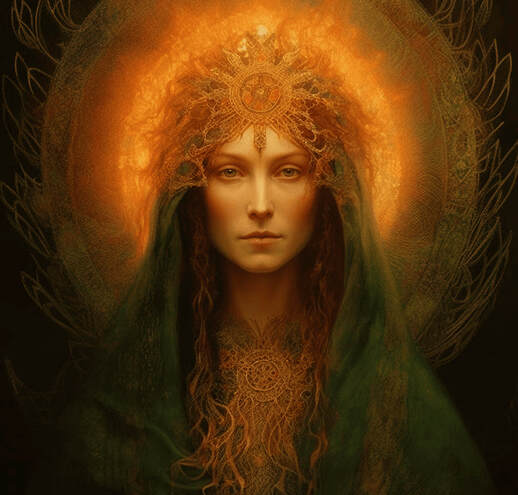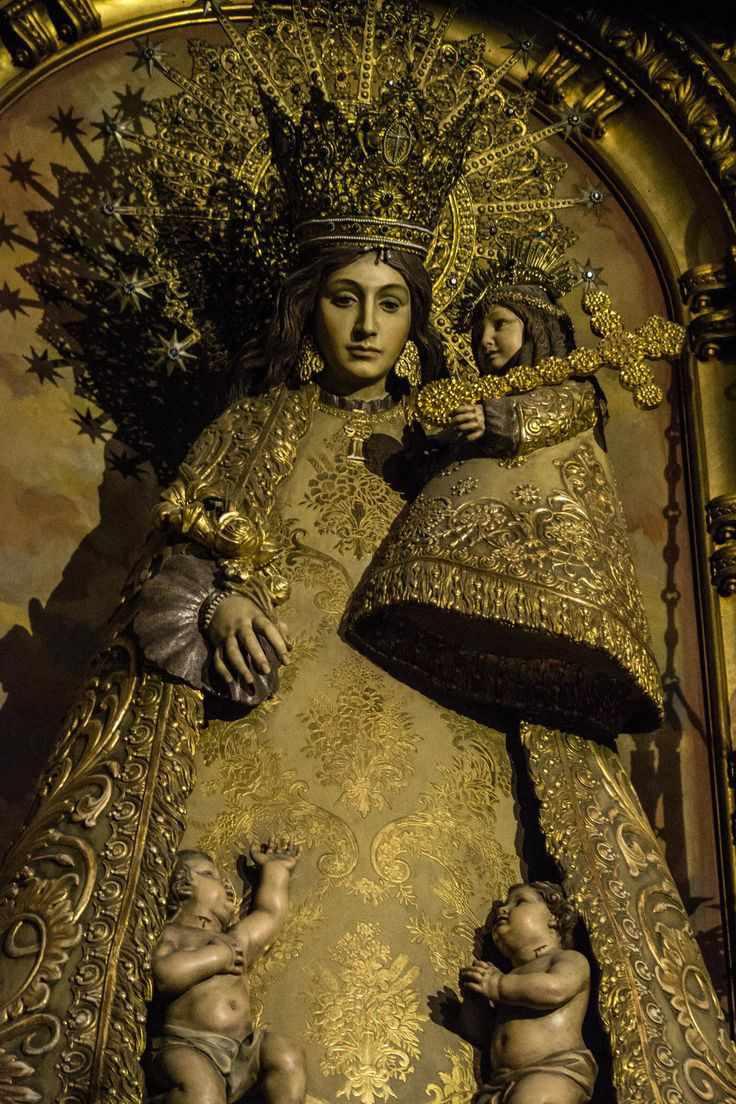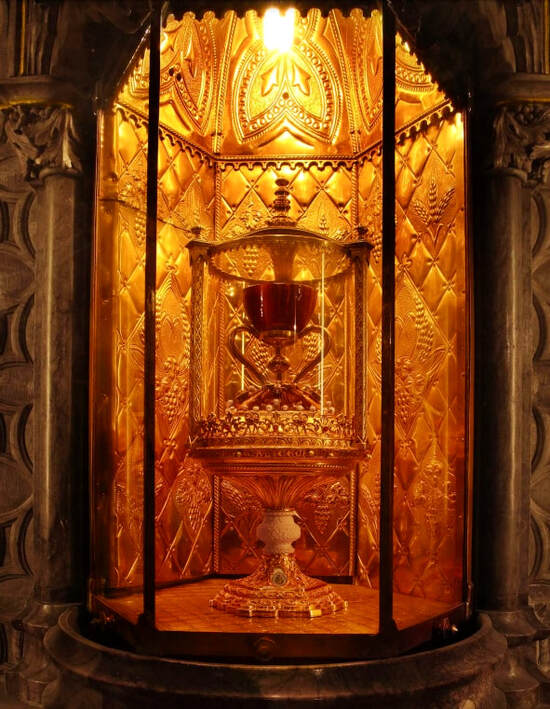The White Goddess, the Holy Grail & the Heart of Valencia
For a while now I have been trying to diagnose the magical synthesis of Valencia, its abiding Deities and its hidden pagan past.
I have noticed there to be a certain quality of feeling here in Valencia that is very particular to the place and the way it interacts with its populace.
Many people come here with various preconceived ideas and touristic notions of what their life will be like when they arrive, only to find themselves going through intense transformative experiences that literally turn their life upside down. It eventually ends with them leaving in deep disappointment, or staying with a total realignment and rebirth of purpose.
This certain quality of transformative landscape is very familiar to me and I have encountered it at various locations in my life whether it be Sedona Arizona, Taos New Mexico or Glastonbury England. It is as if these places, beyond being interesting places to live, are initiatory centers, catalysts for transformation and power points upon the earth.
The polarities of these places are generally either electric / masculine in nature, or feminine and magnetic, both are extremely transmutive but in very different ways.
The electric masculine polarity activates initiation into the upper world and the magnetic feminine, down deep into the underworld.
I now understand that Valencia is the later, the magnetic feminine. Of course once understood it appears as blatantly obvious and almost laughable that this visionary understanding has taken so long to realize. Even though Valencia is in Spain and the sun {Masculine Principle} shines brightly most of the year here, there is, nonetheless, a decidedly inward gaze and overtly tranquil energy that lays like a warm blanket across the entire city.
The entire landscape, the iconography and especially its ancient past has led me to realize that this is a province and City dedicated to The White Goddess {The Triple Faced Goddess} herself and her magnetic healing principle abides in every aspect of the city's character.
This concept originated from the book "The White Goddess: A Historical Grammar of Poetic Myth" by Robert Graves, a British poet and novelist. Published in 1948, the book explores the idea of a universal goddess figure and delves into the mythology, history, and symbolism associated with her.
According to Graves, the White Goddess represents an ancient, primal deity associated with femininity, nature, death, rebirth and fertility. She is depicted as a powerful, enigmatic figure, embodying beauty, wisdom, and most importantly the Muse of creative inspiration. She is deeply associated with the Moon's magnetic tides and can be as severe and punishing as she is benevolent.
Various mythologies, poetry, and folklore illustrate the influence of the White Goddess archetype throughout history. In his book Graves explores the connection between poetry and the worship of the White Goddess, proposing that the inspiration and creative energy behind poetic expression itself stems from devotion to this divine feminine force.
Ultimately, she represents an intricate and multifaceted concept that blends mythology, history, and poetic inspiration into a unified vision of a primal, powerful feminine essence.
The White Goddess is often depicted as a triple deity, representing three aspects of femininity: maiden, mother, and crone. These aspects symbolize the phases of life, the cycles of nature, and the various stages of creative inspiration.
As stated earlier she is deeply associated with the moon, which represents her connection to death, rebirth and fertility, the cyclical tides of renewal, and the intuitive and emotional aspects of human nature.
She is seen as the muse of poets, artists, and creators, inspiring and guiding their work. She is associated with poetic inspiration and the power of language to evoke emotive trance states and transcendent experiences. This kind of poetry acts as a spell casting invocation to her overwhelming and formidable presence.
Often she is linked to the idea of the sacred marriage, whereby a mortal man seeks union with the divine feminine, symbolizing the pursuit of spiritual and artistic embodiment that is deeply honoring to the natural world, embodying its wild untamed aspects that represent the primal forces of life and creation.
She is constantly fluid like the oceans and rivers she rules over, bringing visionary inspiration and poetic trance, or when unbalanced and disruptive, madness and lunacy. She is a timeless presence that pervades not only the ancient past but synchronizes through time and space into various culturally contextual forms, allowing her presence to be felt through the various iconic masks that she hides behind.
Even though Grave's actual connection and inspiration was envisioned and curated in Deia, Mallorca, the White Goddess of whom he speaks is universal and not just situated to the Balearic Islands. He did however spend some time In the late 1920s in Valencia and became enamored with the city. He found it to be an attractive and vibrant place, and its rich history and culture inspired him. During this time, he met and married his second wife, Beryl Hodge, who stayed loyal to Graves poetic vision despite the many Muses that always surrounded him.
Once this connection has been realized the many and varied carved white goddess statues that are scattered throughout the city become extremely noticeable, as if Graves's passing presence ignited the realization of her eminence and remembrance within the city itself.
Originally there was a Roman temple on the site where the Valencia Cathedral now stands. The original temple was dedicated to the goddess Diana, herself considered a patroness of the Moon, also in the same roman ruins is the Micalet Well and the Healing Sanctuary of Asklepios and his daughters. It was a common practice for early Christians to repurpose existing religious sites for their own use, upon which the Cathedral now stands.
The temple dedicated to Diana has left some remnants and archaeological traces can be seen in the cathedral's subsoil. In recent years, excavations and restoration work have revealed the remains of the Roman temple, providing insights into the city's ancient past.
The Micalet Well is an ancient archaeological site that was discovered during restoration work done in the late 20th century. It is an ancient well, a mythological gateway to the Underworld, the Divine Feminine and her healing powers.
Among the archaeological findings is The Healing Sanctuary of Asklepios and his daughters, the Asclepiades. Asclepios is a hero and god of medicine in ancient Greek / Roman religion and mythology. Asclepius represents the healing aspect of the medical arts and his daughters, the "Asclepiades", are: Hygieia (Health, Healthiness, Hygiene), Iaso (Recovering, recuperation}, Aceso (Goddess of the healing process), Aegle (Goddess of good health) and Panacea (the goddess of universal remedy). He shared with Apollo the epithet Paean meaning "the Healer". The rod of Asclepius, was a snake-entwined staff, (similar to the caduceus) which remains a symbol of medicine to this day.
The cult of Asclepius & his daughters became extremely popular and pilgrims flocked to the healing temple to be cured of their ills. Ritual purification would be followed by offerings and sacrifices, the supplicant would then spend the night in the holiest part of the sanctuary– the Abaton.
Dreams and visions would be reported to a priest/priestess who would prescribe the appropriate therapy by a process of divinatory interpretation. Sacred dogs , and/or, goats were enrolled to lick the wounds of sick petitioners. Also a particular type of non-venomous snake was often used in healing rituals, and these snakes— the Aesculapius Snakes— slithered around freely on the floor in dormitories where the sick and injured slept. These snakes were introduced at the founding of each new temple of Asclepius throughout the classical world. The snake itself considered a transmutative force linked with the Underworld.
There was also an open pond or lacus for ritual abulations. Abulation is a ritual purification of some parts of the body before religious acts. The location of the Sanctuary was due to the existence of the well and its water source, hence its relationship with the cult of Asclepius.
All of this links itself throughout time and history to a mythological connection with the Underworld forces inherent within these ancient healing practices and the Healing waters, totems and spirits associated with them. It is this abiding healing spiritual force within Valencia’s history that has echoed throughout time, disguised in various cultural iconic forms.
To the end of the 1st century AD, the perimeter was enlarged and two fountains were built, of which now only one remains. In the beginnings of Christianity, this pool was used as a baptismal for religious practices.
During the Visigothic period it continued to be utilized, more or less maintaining its general structure between the 5th and 7th centuries. It was not until the beginning of the 11th century, in the Islamic period, that the pool was covered, and a large waterwheel was built next to the well.
As you can see throughout the centuries a reoccurring link has been formulated at the heart of Valencia. Whereby an inescapable, reemerging pattern linked to an ancient Well, its healing waters and baths, its varied icons and baptismals, pass all the way through to the modern age - to possibly its most famous incarnation, that of the Holy Grail.
The cathedral itself now stands as a testament to the historical and cultural layers that have shaped the city of Valencia over the centuries and proof of the constant resurgence of the White Goddess herself cloaked in her many varied cultural forms.
The Holy Grail as a religious artifact is associated with the Last Supper of Christ. It refers to the cup or chalice that Jesus used during the last supper and which later held his blood during the crucifixion.
The Holy Grail has a rich history and has been the subject of various legends and stories, with many places claiming heritage to this sacred relic, including Valencia.
The Holy Chalice in Valencia is also known as the Santo Cáliz and believed by many to be the true Holy Grail. According to the tradition, it was brought to Spain by Saint Peter and remained in Jerusalem until the 4th century when it was taken to Rome. In the 8th century, during the Islamic conquests, the chalice was transferred from Rome to Valencia in Spain for safekeeping. Later it was moved to the Monastery of San Juan de la Peña in Aragon. In the early 15th century, King Martin I of Aragon presented the chalice to the Valencia Cathedral, where it has been kept in the cathedral ever since.
The authenticity of the Holy Chalice of Valencia as the true Holy Grail is a matter of faith and belief, as it is with other claimants to the title. However, the Valencia chalice has been studied and analyzed by experts over the years and has been found to be the closest approximation in its creation to the time period in which Christ lived and died.
In 1960, the chalice was subjected to scientific examination by Antonio Beltrán, a professor of medieval history. Amazingly he concluded that the chalice dated back to the 1st century AD, making it the most plausible of the many varied claimants to be the same cup used by Christ during the Last Supper.
In 2014, Pope Francis declared the Holy Chalice of Valencia as a Holy Relic, confirming its significance in Christian history and devotion. Ever since the Valencia Cathedral has become a popular pilgrimage site for those seeking to see and be in the presence of the Holy Grail.
The Chalice itself is a simple, small stone cup made of agate, agate being a semi-precious gemstone that holds spiritual significance in various cultures and belief systems. It is valued not only for its aesthetic beauty but also for its many metaphysical properties.
Agate is often regarded as a stone of protection, it is thought to bring harmony and balance into one's life. It is also deeply associated with healing, promoting inner peace and enhancing intuition, opening channels of communication with higher realms, and facilitating spiritual transformation, which make these properties all the more pertinent when considered to be the Holy Grail itself.
In various legends the Holy Grail is depicted as a sacred vessel with magical powers. It is said to possess miraculous qualities, granting eternal youth, healing, and spiritual enlightenment to those who find it and partake of its powers. It has been linked to the Knights Templar and there are various legends linking it to varied places including the Monastery of San Juan de la Peña, Glastonbury, Château de Montségur, Rosslyn Chapel among others, but as stated above the closest approximation of the 'real' Grail is the one here in the Chapel in Valencia.
Its intense presence is felt throughout the city and its Sangrail pours out as a kind of Axis Mundi to the entire Valencian landscape.
In mythology cauldrons are frequently depicted as magical vessels associated with rebirth, transformation, and regeneration. These cauldrons have the power to restore life and heal wounds. The cauldron is considered analogous to the Holy Grail, representing a source of rejuvenation and spiritual nourishment.
The connection between the cauldron and the Holy Grail, one being the precursor to the other, lies in their shared symbolism of restoration, healing, and renewal. Both objects are associated with the revival of a wounded or suffering king and the rejuvenation of the land and its people.
It is often depicted as a large cooking pot or vessel used for magical or transformative purposes. It is frequently associated with witchcraft, magic and alchemy. It symbolizes the transformative powers and the cycle of life, death, and rebirth. In some legends, cauldrons are said to contain magical elixirs or are used in rituals to create potions or perform divination.
One such famous legend is Cerridwen's Cauldron - a symbolic and mythical object in ancient Welsh folklore, which is not in any way linked to the grail of Valencia, other than its comparative understanding of the progressive myths of a sacred cauldron/chalice that wields magical and mystical powers.
The goddess Cerridwen is a powerful sorceress and a guardian of knowledge of the cycles of life and death. She possessed a magical cauldron that had the power to grant wisdom and inspiration. It was believed that Cerridwen brewed a potent potion within the cauldron, called "Awen," which bestowed poetic inspiration and spiritual insight to those who consumed it and is intricately linked to the tale of Taliesin, the renowned Welsh bard and poet.
Cerridwen had a son named Morfran, who was said to be ugly and deformed. In an attempt to compensate for her son's appearance, she decided to brew a special potion in her cauldron that would grant him great wisdom and poetic powers.
The potion required a year and a day to brew, and Cerridwen appointed a young boy named Gwion to stir the cauldron. Accidentally, three drops of the potion splashed onto Gwion's thumb, while he was stirring the elixir, instinctively he licked it and by doing so, he gained all the knowledge and inspiration which was meant for her son Morfran.
Realizing what had happened, Cerridwen chased Gwion in a fit of rage. Gwion used his newfound abilities to transform himself, he shape-shifted into different creatures, eventually becoming a grain of wheat. Cerridwen, in turn, transformed into a hen and consumed the grain of wheat, thereby swallowing Gwion.
Cerridwen became pregnant and after nine months, she gave birth to a beautiful baby boy who she named Taliesin, who grew up to be the most talented and revered of all the bards throughout Ancient Druidic history.
Thus, Cerridwen's Cauldron symbolizes the transformative power of knowledge and inspiration. It is a potent and mystical symbol, reflecting the deep connection between the Goddess, magic and its magical powers.
This echoing theme spans through time and cultures always repeating the same myths, but as stated before, through different cultural and societal reference points. That being, the chemical effect of a Cauldron or Chalice, through an act of sacrifice and trial that leads the initiate, through what magically may be termed a trial or a journey through the underworld, whereby a deep testing of the soul of the participant is eventually rewarded with a great treasure, the Sangrail, the Elixir of Life and its healing powers, renewing not only the individual involved but the entire community and their inherent landscape.
Another famous account this time of the Holy Grail and its transmutative qualities is found in the Arthurian tales of King Arthur and the Knights of the Round Table. These stories revolve around the quest for the Holy Grail undertaken by Arthur's knights, including Sir Galahad, Sir Lancelot, and Sir Percival.
Throughout the legends, the Holy Grail remains elusive, appearing only to those who are deemed worthy and pure of heart. The knights face various challenges and temptations along the way, testing their loyalty, bravery, and moral integrity. The search for the Holy Grail becomes a metaphorical quest for self-discovery, redemption, and the attainment of spiritual enlightenment.
In these legends The Fisher King is the wounded king who guards the Holy Grail and resides in a castle known as the Grail Castle. He is often portrayed as the last in a long line of guardians of the Grail. The Fisher King's affliction is believed to be linked to a wound or illness that affects the land, rendering them barren and desolate.
He sustains a mysterious wound to his thigh or groin area. This wound leaves him unable to fulfill his role as a king and protector of the Grail. The kingdom suffers as a result, symbolizing a connection between the king's well-being and the land's fertility, the Grail's healing properties are seen as the key to restoring the king's health and reviving the land.
In all these stories & legends both Cauldron & Grail are the alchemical vessels that not only heal the initiate but restore new life and, most importantly inflame the creative imagination with vision, power and spiritual grace.
Whether it is Asclepys and his daughters drawing from the healing well and its water, or Cerridwen and her potion of plenty, or Christ’s grail and its promise of rebirth and new life, the entire mythological metaphor is one of the feminine principle, the sacred receptacle that holds and passes on the sangreal, the sacred inspiration, wisdom and illumination, to heal not only the initiate but also the community and restore the land itself.
This in turn brings us back to whom I propose is the current representative of the Divine Cup, the Sacred Vessel, the White Goddess here in Valencia.
My initial encounter with La Virgin here in Valencia was a few years ago whilst I was sat meditating at my old apartment in Cabanyal. Her profound presence entered my room, and she asked me to attend to a Mesa Blanca {A spiritual mass in the tradition of Espiritismo} for her, on the upcoming Sunday and offer her white roses. I was brought to tears from her compassionate presence and love. Up to this point I had not paid much attention to the local Deities, as I was going through an extremely intense faze of my life and was focused on re-stabilizing my own spiritual framework.
It was the next day when I was telling a friend of my experience, that to my amazement, they not only told me she was the Patroness Saint of Valencia but that, the upcoming Sunday was her Feast Day when she was paraded through the streets of Valencia, the exact day she had asked for Her Mesa Blanca. It was from that moment onwards that I have felt her presence and been guided to write about and serve her whilst living here in Valencia.
As the Patroness Saint of Valencia, La Virgin de los Desamparados, Our Lady of the Forsaken, is a revered religious figure in Spain, particularly here in Valencia. Her history dates back several centuries and is deeply intertwined with local folklore, various legends and religious traditions.
According to one of the legends, the origin of the devotion to the Virgin of the Desamparados can be traced back to the 14th century in Valencia. It is said that a pious woman named Sister Paula, who lived in the Monastery of San Juan de la Penitencia, experienced a vision of the Virgin Mary. In this vision, the Virgin instructed Sister Paula to build a chapel in her honor in a specific location.
Following the vision, Sister Paula shared her experience with the local archbishop and other authorities. They approved the construction of a chapel on a hill outside the city walls, known as the Hermitage of Desamparados. The chapel became a place of devotion and pilgrimage for the people of Valencia.
Over time, the devotion to the Virgin grew, and a fraternity was established to care for the chapel and promote her veneration. This played a crucial role in organizing processions and events to honour the Virgin and spread her message of compassion and care for the forsaken and vulnerable.
Yet another legend has it that in 1409, a Valencian priest confronted a mob who were preparing to lynch a mentally ill homeless man near Santa Catalina. Father Jofre exhorted the mob to take pity on the poor soul, instead of stoning him to death. He would later base an important sermon on this and, as a result, Valencia would become the first city in the world to open an asylum for the mentally ill.
The asylum was run by a group of nuns, whose symbol was Our Lady of the Forsaken (Mare de Déu dels Desamparats). Over time, this symbol grew in importance and today is Valencia’s most well-loved and famous icon. She embodies Valencia’s historically unique role in caring for society’s most down-trodden members.
One of the most significant events associated with her is the annual procession, known as the "Romería de la Virgin de los Desamparados." This procession takes place on the second Sunday of May and attracts thousands of faithful followers. The image of the Virgin, adorned with flowers is carried through the streets of Valencia on
an ornate float, accompanied by music, prayer, and celebration.
The "Ofrenda de Flores" or Flower Offering is one of the most significant and popular events during the Fallas festival, It takes place on March 17th and 18th each year. During this event, participants, dressed in traditional regional costumes, offer bouquets of flowers to the Virgin Mary at the Plaza de la Virgin.
The Flower Offering is a massive procession where individuals and groups representing different neighbourhoods and organizations in Valencia carry flowers to create a large and elaborate floral arrangement in honour of the Virgin Mary. These floral arrangements form a beautiful and colourful mosaic depicting the image of the Virgin.
Participants carry their flowers and walk towards the Plaza de la Virgin, where they add their bouquets to the growing display. Each person places their flowers in designated spaces on a wooden structure, which gradually transforms into a stunning tapestry of colours and fragrances.
The Flower Offering is a deeply rooted tradition in Valencia, and it represents the devotion and gratitude of the Valencian people to the Virgin Mary. It is a symbolic gesture of love and respect that attracts large crowds of spectators from all over the world who come to witness the procession and the impressive floral display.
I would claim that this event in itself is a huge, ritualized devotion to the White Goddess when viewed from a syncretic perspective. The entire city stops to devote themselves to the Goddess who watches over her town dressed now in a robe of the devotees’ flowers. One can only imagine similar offerings being made in the exact same place throughout the centuries to her ancient past expressions such as the Goddess Diana.
As stated at the beginning, there is a historical trail of the connection between, who I suggest is The White Goddess, in her many forms and her abilities, whether it’s through a cauldron, well or chalice that is an inherent link to her healing and transformative waters.
As an interesting side note here in Valencia, The Water Tribunal, also known as the Tribunal de les Argues, is a unique institution in Valencia's legal and cultural heritage. Dating back to the Islamic period, this tribunal is responsible for resolving disputes related to water usage and distribution in the region. Its origins and traditions are intertwined with ancient customs and rituals, creating an aura of mysticism around the consumption and usage of water here in Valencia which still continues every Thursday outside the cathedral to this very day.
There are a myriads of other reference points and places I could mention that are linked to this magical understanding of Valencia’s occult meaning which I hope I have laid out a little of in this article. The purpose of this is to suggest to the reader, that if what I say is true, and you come to Valencia informed with this secret understanding, you may utilize this power and information to heal yourself from any prevailing ailments.
When petitioned consciously the powers that reside here in this city respond quite profoundly, as they have done throughout the centuries.
So, whether you are lacking direction, uncentered or unfocused, suffering from a creative block, depression, burnout, any physical ailment or feeling forsaken in any manner, I am sharing with you the great possibility that you can visit Valencia with me as your guide and I will take you through a series of spiritual ceremonials, where together we will call upon Her great powers to aid you in your needs. I will act as your spiritual guide through the city, taking you to various magical locations, so that you to may come under Her auspices and be blessed with her magnificent and ancient healing powers.
